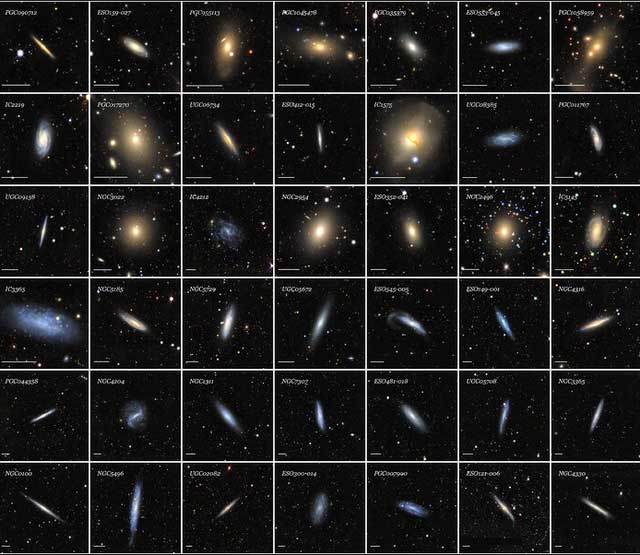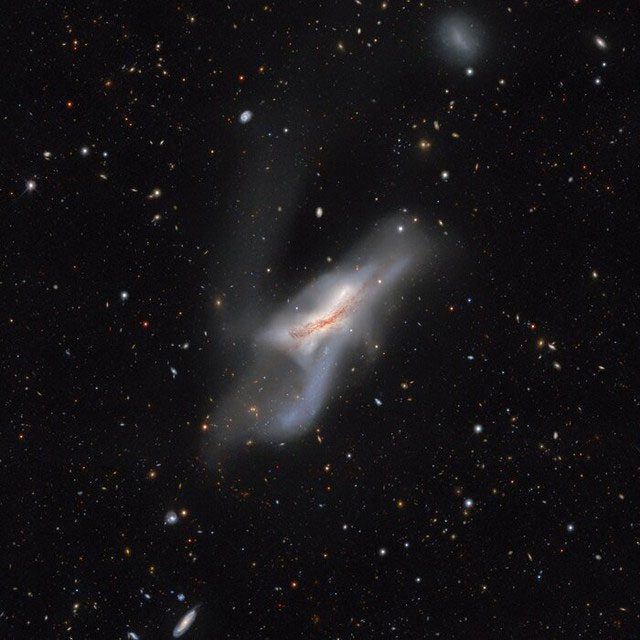The Siena Galaxy Map is truly a “treasure trove” of information, providing valuable details for scientists researching the structure of the universe, and it is completely accessible to the public for free.

Photograph of several galaxies in the new map. (Image: CTIO/NOIRLAB/DOE/NSF/AURA/J. MOUSTAKAS).
Named the Siena Galaxy Map (SGA), this digital map was created based on data from three astronomical surveys conducted from 2014 to 2017 by the Cerro Tololo Inter-American Observatory (CTIO) and the Kitt Peak National Observatory (KPNO). All three surveys are part of the DESI Legacy Imaging Survey project, carried out by an international team of astronomers.
Such cosmic maps can assist astronomers in detecting patterns that allow for the classification of new discoveries, such as stars that unexpectedly flare up before disappearing.
Additionally, the map facilitates astronomers in identifying potential candidates for further research. These digital data repositories are continuously updated with the latest findings, especially in the modern era where telescope technologies are rapidly enhancing their capabilities.
What sets the SGA apart from similar previous projects is the enviable accuracy of the entire dataset used, thanks to images captured by the most advanced machinery available today.

Image of two galaxies merging that began over 300 million years ago, according to SGA. (Image: CTIO/NOIRLAB/DOE/NSF/AURA/J. MOUSTAKAS).
SGA is also the first cosmic map to collect information about the light of galaxies, specifically data describing how the brightness amplitude of a galaxy changes from its brightest point (usually at the center) to its faintest (at the edges of the galaxy).
“The large galaxies near the Milky Way are important because we can study them more thoroughly than other galaxies in the universe; they are our neighbors”, Space.com quotes the project leader, Professor John Moustakas from Siena College (USA), a university associated with the Franciscan Order of the Catholic Church.
“They are not only incredibly beautiful, but they also hold the key to understanding how galaxies form and evolve, including our own Milky Way”, Professor Moustakas commented.
The public can access the SGA to enjoy stunning images of the neighboring galaxies of the Milky Way at: https://sga.legacysurvey.org/.


















































